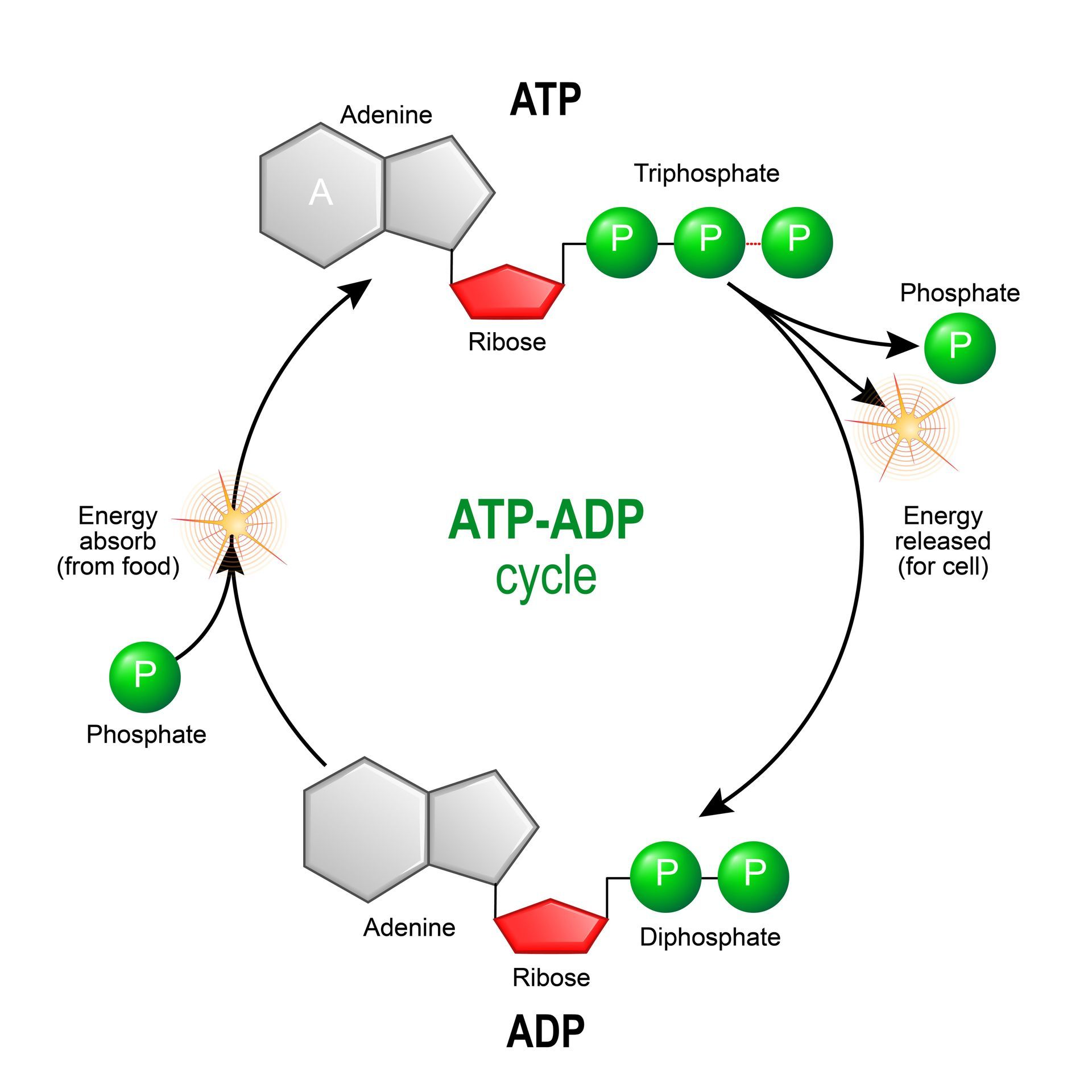How is energy produced?
On this page, I will be highlighting how energy is produced, what we need it for and the essential nutrients to make it happen.

ATP-PC Energy System
Breaking down adenosine triphosphate (ATP) produces kinetic energy which allows our muscles to contract to produce a movement. However, we only have a certain amount of ATP so our body needs to find a way to make more.
In terms of structure, ATP is an RNA nucleotide which has a chain of three phosphates attached to it. When broken down, ATP splits into adenosine diphosphate (ADP) and an extra phosphate.
This is where the phosphocreatine (PC) in our body steps in and donates a phosphate molecule to the ADP to turn it back into ATP which can then be broken down again for energy and the cycle is repeated.
The process is similar to having a rechargeable battery.
Phosphocreatine is made in smaller amounts in our body but our main source is in protein-rich foods.
We fatigue when using the ATP-PC energy system when our body runs out of phosphocreatine which takes around 10 seconds so it is the shortest but the fastest acting of our energy systems.
Another advantage of the ATP-PC system is that is produces no by-products.
We can recover half of our ATP-PC system in around 30 seconds and it takes about 2 minutes to fully recover it.
This energy system is very usefully for sports that require a short burst of energy for example, weightlifting or 100m sprint.

Lactic Acid energy system
Coming soon
Aerobic energy system
Coming soon
All Rights Reserved | Timeless Performance